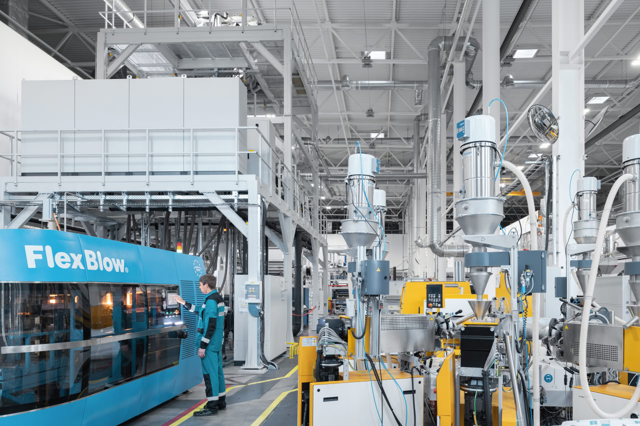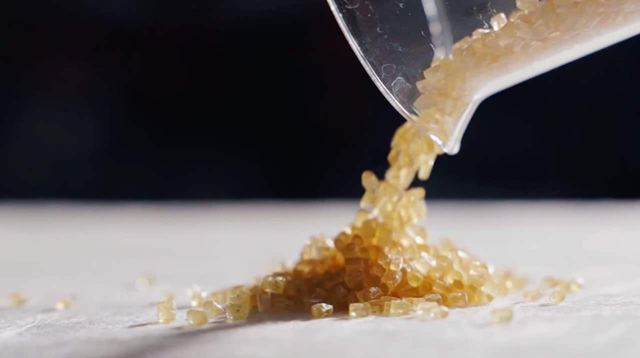From technological sovereignty to future products: an interview with Ilnaz Zaripov.
Naked Science: 80% of everything around us is made of polymers. This includes packaging for food and beverages, building materials, car parts, shoe soles, and much more. Let's start with the basics: how are polymers created?
Ilnaz Zaripov: By-products from oil and gas extraction companies reach us: associated petroleum gas and wide fraction of light hydrocarbons [a mixture of propane and butane and heavier hydrocarbons, from C5 and up. — NS], straight-run gasoline, ethane, from which liquefied hydrocarbon gases [mainly propane, isobutane, and n-butane. — NS] are derived at gas processing plants — crucial raw materials. Through the processes of pyrolysis or dehydrogenation, we obtain monomers, particularly olefins. They are almost impossible to find in their free form on Earth, and their artificial production from fossil hydrocarbons is the first and most important task of the petrochemical industry.
 5
5 These substances can combine under certain conditions into very long molecular chains — polymers. After specific transformations unique to each type of polymer, polyethylene (used for films, pipes, cans), polypropylene (automotive parts, films, equipment), polyvinyl chloride (window profiles, linoleum, suspended ceilings), synthetic rubbers (rubber products, car tires, shoe soles), and many other polymers are formed.
NS: When you create a new catalyst, developing a technological process for a new mass product, such as hexene, what is the primary goal? To replace the previous technology? Or also to achieve new results, given that catalysts in petrochemistry have evolved significantly in the last 30 years? What are the main tasks facing domestic petrochemistry? To replace departed products and technologies? Or are there unique products as well?
Ilnaz Zaripov: There are tasks regarding technological sustainability and sovereignty. This involves developing those catalysts and special components without which our existing productions would come to a halt. At the same time, we have the opportunity to make our replacement catalysts a bit better, fine-tuning individual parameters to enhance production efficiency or improve the characteristics of the final product. We actively work on such projects with our scientific partners, including MSU and institutions of the Russian Academy of Sciences. Through refinement, we can achieve cost savings in production, but the key task is to ensure production continues despite known threats.
The second category of tasks involves developing new products that we have not previously produced or used in our company. Such products may have been manufactured elsewhere in the world, but they were only imported to us in Russia. For instance, these could be super-structural plastics, new grades of polymers, polyethylene or polypropylene, with new properties, or new polycarbonates.
 6
6 Currently, the consumption of polymers per capita in Russia is significantly lower than in developed countries, and we see a growing demand driven by import substitution tasks and the broader use of effective polymer solutions across many industries. This work is conducted in close collaboration with partners in various sectors, allowing us to find optimal solutions for import substitution or enhancing grades to meet specific requests. For comparison: the share of polymer solutions in housing and utilities in Russia is up to 40%, while in Europe it is up to 85%. According to experts, by 2028, the consumption of basic polymers in Russia could increase by 35-40% and reach 6 million tons.
And there is a third category of tasks that we actively work on with our scientific partners. These are technologies and products that did not exist at all before. However, such products can significantly change entire industries.
For example, this could be a super-structural plastic that has never existed before and possesses such a combination of mechanical properties that it can compete with metals and their alloys in applications where only metals were used previously. We also have such exploratory tasks, technologies of the future. Naturally, tasks of different classes are solved over varying timeframes, with the more complex ones being addressed later.
 7
7 Polyetherketoneketone (PEKK) — a rapidly growing thermoplastic, a polymer of aromatic rings, containing repetitions of ether and ketone bonds in its main chain. It is used to produce a variety of items for demanding industries using 3D printers. It boasts an excellent strength-to-weight ratio. SIBUR has developed its own production technology for polyetherketoneketone (PEKK), one of the most modern and sought-after super-structural plastics in the global market. A pilot plant with a capacity of 1.5 tons has been launched at the SIBUR Innovations research center in Tomsk.
NS: Could you provide our readers with specific examples of the most important success stories from SIBUR Innovations?
Ilnaz Zaripov: For example, there is linear polyethylene, a fairly elastic material. It is a crucial component of packaging. To make polyethylene linear and sufficiently elastic, comonomers are added — typically butene or hexene (C6H12), with the latter being the most common. Hexene is produced through the trimerization of ethylene (the joining of three ethylene molecules together, 3 C2H4 → C6H12).
 8
8 In Tomsk, in 2016, we developed our own technology for obtaining hexene, a proprietary trimerization pathway. It is protected by numerous patents and has its own trademark, HEXSIB. Right now, a facility is being completed in Nizhnekamsk that will produce 50,000 tons of hexene per year using this technology, with the installation expected to go live next year. Since hexene is one of the components of linear polyethylene, the new capacity will meet the needs of the Russian market for this material used in packaging, such as stretch film.
 9
9 Previously, hexene was not produced in Russia for specific purposes, even using licensed technologies, making this the first story of its kind for us. There was a very small production as one of the components of linear alpha-olefins, but it was only “one of” and not at the scale needed by the market. Now, however, we will have a significant industrial capacity, fifty thousand tons per year.
NS: Could you provide specific examples of technological sovereignty tasks concerning catalysts?
Ilnaz Zaripov: In our work to ensure catalysts, there are different stages. We have just completed the first stage: searching for analogs from friendly countries. This allows us to maintain production until we complete the entire cycle of developments and tests of our own solutions in this area.
Simultaneously, we are working on another stage: together with partners, such as the Topchiev Institute of Petrochemical Synthesis of the Russian Academy of Sciences and several universities, we are developing domestic catalysts. For some of them, we have already completed the laboratory stage and are now working on creating industrial capacities for mass production of these catalysts.
80% of production processes in petrochemistry rely on catalysts; without them, it is impossible to obtain polymers of the required quality. For instance, a plastic car bumper must be simultaneously strong, tough, and flexible — and if its catalyst is not sufficiently perfected, it will easily crack under even minor impacts instead of providing protection to the rest of the vehicle. It is no surprise that chemists Ziegler and Natta received the Nobel Prize for developing catalysts for polyethylene and polypropylene production — those that are currently of interest to SIBUR. The company utilizes over a hundred different catalysts, more than half of which were imported until 2022.
The process of development and pilot production is lengthy because replacing one catalyst with another is quite a complex task: when you create it, it is first tested in very small volumes in laboratories, then in pilot industrial installations, and only then in mass production. The suitability of the polymer for the final product becomes clear only after the final product has been developed and tested.
This is the work of our colleagues at the applied research centers "SIBUR-PolyLab". For example, a chromium catalyst, the production technology of which we developed, is used for producing a grade of polyethylene intended for blow molding. Various containers are made from this type of polyethylene: shampoo bottles or cans for automotive oils. And these cans possess many qualities (ranging from resistance to certain liquids to the ability to withstand mechanical loads without cracking), any of which would render them useless to the consumer if absent.
 0
0 As I mentioned, we have progressed from replacing imported solutions to a stage where our experience, competencies, and ambitions allow us to create new solutions. Thus, our research infrastructure is also developing.
For example, the Technology Pilot Center has been established in Tyumen. This is the first multifunctional center in Russia and unmatched worldwide, where almost all technologies for producing polyolefins available in Russia can be tested. In such a center, we will be able to experiment with new catalysts and new technologies right “in the middle” between laboratory and industrial production. That is, we will be able to produce new polymers or polymers with new catalysts in volumes larger than those in laboratory reactors, allowing us to test all the qualities of the final product